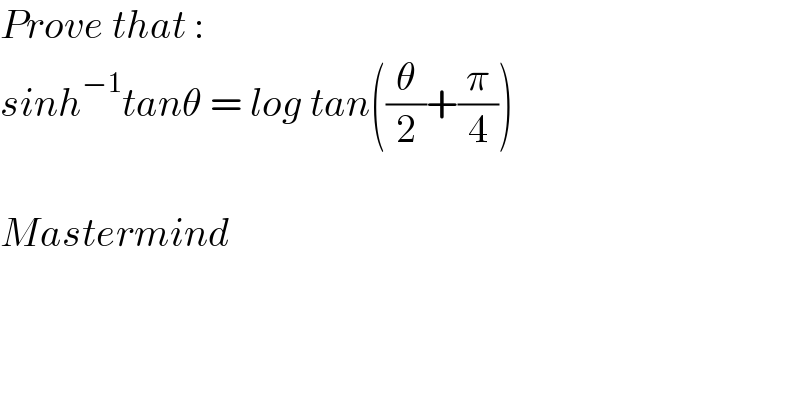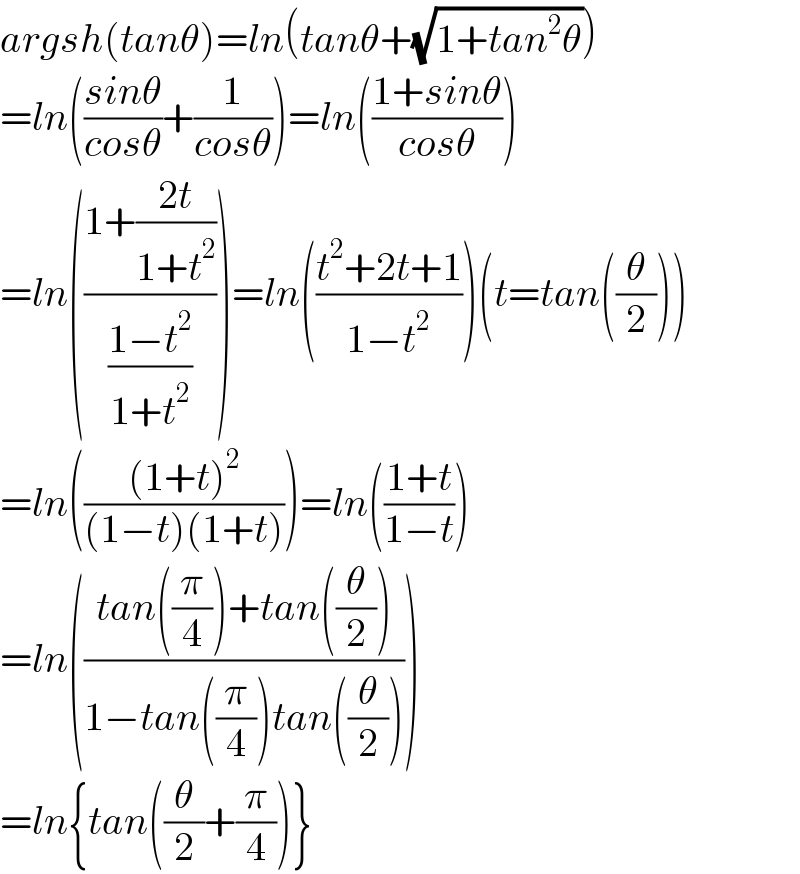
Question and Answers Forum
Question Number 168187 by Mastermind last updated on 05/Apr/22

Answered by peter frank last updated on 06/Apr/22
![sinh^(−1) x=ln (x+(√(x^2 −1)) ) x=tan θ sinh^(−1) tan θ=ln (tan θ+sec θ) ln (tan θ+sec θ)=ln (((1+sin θ)/(cos θ))) ln (((1+sin θ)/(cos θ)))=ln (((cos (θ/2)+sin (θ/2))^2 )/(cos^2 (θ/2)−sin^2 (θ/2))) =ln (((1+tan (θ/2))/(1−tan (θ/2))))=ln[ tan ((π/4)+(θ/2))] sinh^(−1) tan θ=lntan [ ((π/4)+(θ/2))]](Q168194.png)
Commented by Mastermind last updated on 07/Apr/22

Answered by Mathspace last updated on 05/Apr/22

Commented by Mastermind last updated on 07/Apr/22

